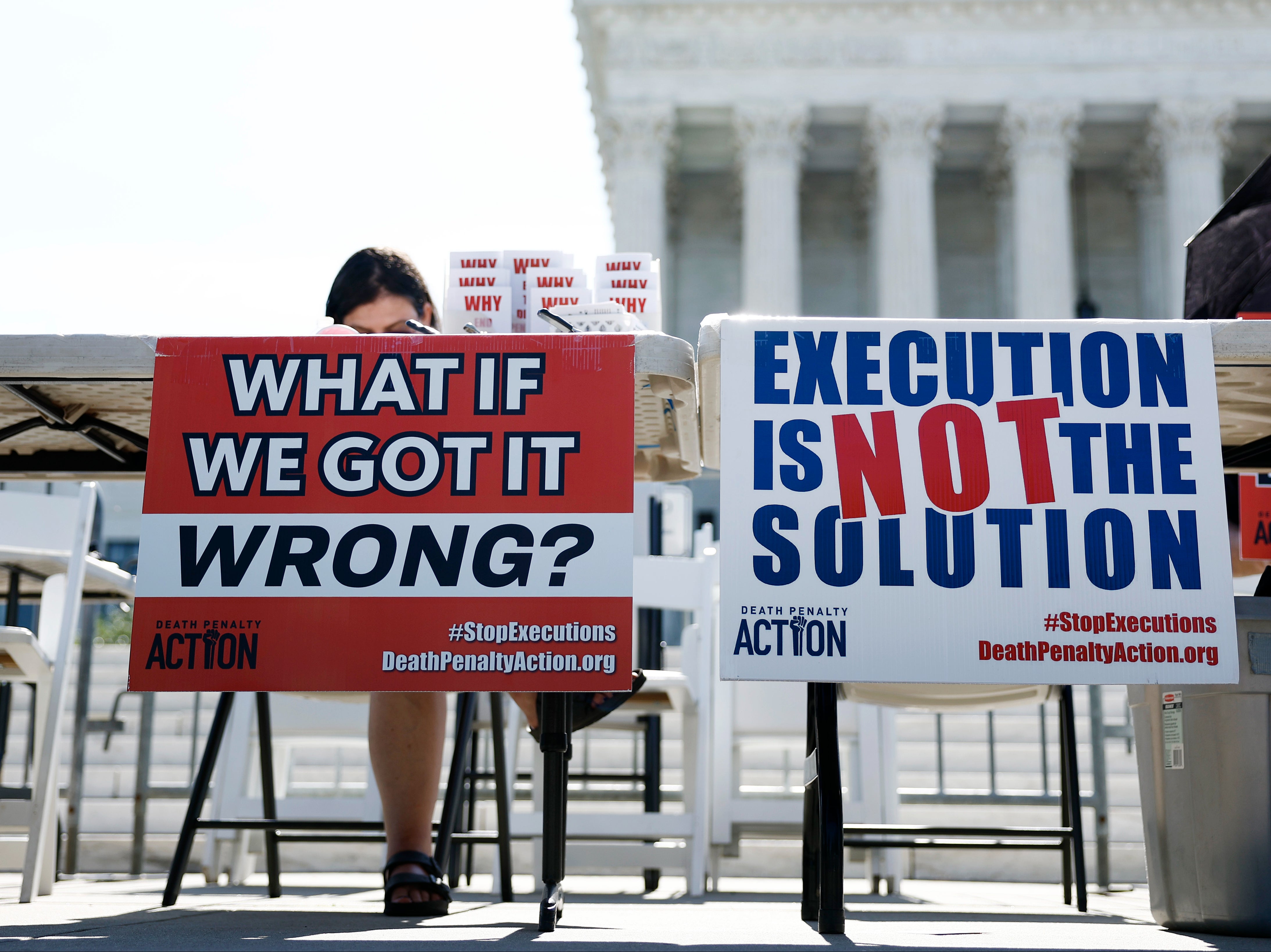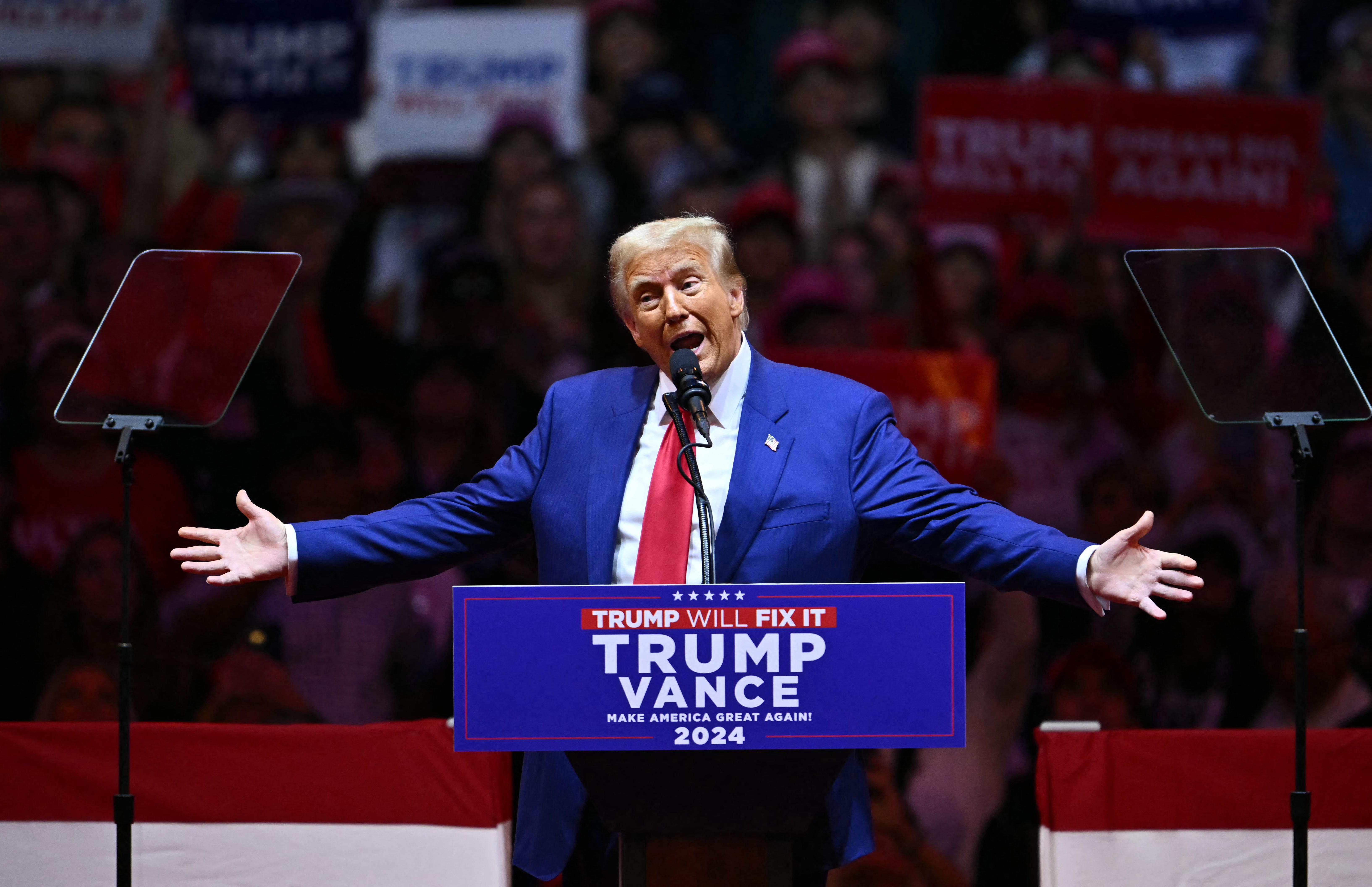Why a Trump win could lead to record numbers of death row executions
The end of his first presidency saw a frenzied number of executions – levels not seen since 1896. Should Trump be re-elected, America must be prepared for worse to follow, writes Eric Lewis


Donald Trump has a long history of embracing, even fetishising, the death penalty and using it as a wedge in racial politics. He first came to national prominence by placing full-page ads in the New York Times in the wake of the so-called Central Park Five’s arrest for the brutal rape of a jogger and calling for New York to reinstate the death penalty.
Five minority teenagers were convicted without physical evidence and based upon coerced confessions; they were ultimately exonerated by DNA evidence. Trump has refused ever to apologise and even at last month’s presidential debate claimed there were people “on both sides of that”, and that the victim died, which was false.
Earlier this year, he called for capital punishment for drug crimes, saying “you’ll never solve the problem without the death penalty,” and lauded China’s liberal use of the death penalty for similar offences, after “quick trials”.
He has previously suggested that former chair of the joint chiefs of staff Mark Milley committed treason for which the death penalty was appropriate. And Trump has repeatedly called for the death penalty for any migrant who kills an American – including again yesterday at a major rally held at Madison Square Garden in New York.
This is not just election year rhetoric for the Maga base. If Trump wins, his first presidency is a harbinger of what’s to come. In the waning days of 2020, Trump created a terrible assembly line of death, executing more prisoners on federal death row than in any year since 1896, during the second term of Grover Cleveland.
Thirteen executions were carried out in those last few months, ending a moratorium on the federal death penalty that had been in place for more than 40 years, through Republican and Democratic administrations alike.
Trump is likely to try to outdo Cleveland if he gets a second term. Within the 900-page Project 2025 blueprint for a second term is the recommendation that a Trump administration should “do everything possible to obtain finality for the 44 prisoners currently on federal death row”. In other words, they should all be put to death.
Trump has denied having anything to do with Project 2025, but his record is damning on its own. His administration first executed six white men and a Native American. Seven of the last eight people executed were Black (the eighth was a brain-damaged woman).
Many had had their executions stayed by lower courts, only to have those stays promptly overruled by a Trump-controlled Supreme Court that has shown impatience bordering on anger in response to any delays.
Of the prisoners remaining on federal death row today, 56 per cent are Black, LatinX or Asian. Reprieve, the organisation that I chair in the United States, recently issued a comprehensive analysis of every botched execution in the United States since the death penalty was reinstated, which often resulted in prolonged and painful deaths.
There were 73 in total, an alarmingly high number in and of itself. But twice as many Black people were subjected to them as white people. Even in their final moments, Black defendants suffered the racism that pervades the “machinery of death” as Justice Blackmun called it in 1994, refusing to affirm any further death sentences. The current Supreme Court has no such reservations.

Project 2025 not only calls for emptying federal death row, it also advises how to refill death row with an expansion beyond Constitutional limitations. It recommends that the Justice Department pursue the death penalty “for applicable crimes – particularly heinous crimes involving violence and sexual abuse of children – until Congress says otherwise through legislation”.
Supreme Court precedent precludes execution for non-homicides, even in the most horrific cases. In a 2008 decision, Kennedy v Louisiana, a quite conservative Supreme Court held that “where no life was taken in the commission of a crime”, the death penalty, even in a child abuse case, “is unconstitutional under the eighth and fourteenth amendments.”
Project 2025 is following the Trump playbook in inviting the Supreme Court to use its newfound numbers to overrule decisions that it does not like. In calling for executions of non-homicidal offenders, it is setting up a new Dobbs case – which overturned Roe vs Wade – for capital punishment.
Preventing a second Trump administration would obviously be a way to save the lives of the 44 people on death row and the expansion of the federal death penalty. But Biden can do something now that does not rely on the vagaries of American politics. He can commute those sentences to life imprisonment.
As Trump illustrated with respect to his cronies and his promises to the 6 January insurrectionists, pardons and commutations are final and cannot be undone. Biden should use his power to save lives and limit the squalid, racist politics of capital punishment in the United States.
Eric Lewis is a human rights lawyer who sits on the board of The Independent




Join our commenting forum
Join thought-provoking conversations, follow other Independent readers and see their replies
Comments